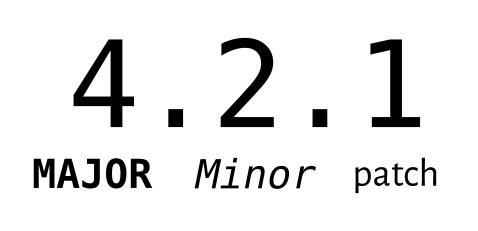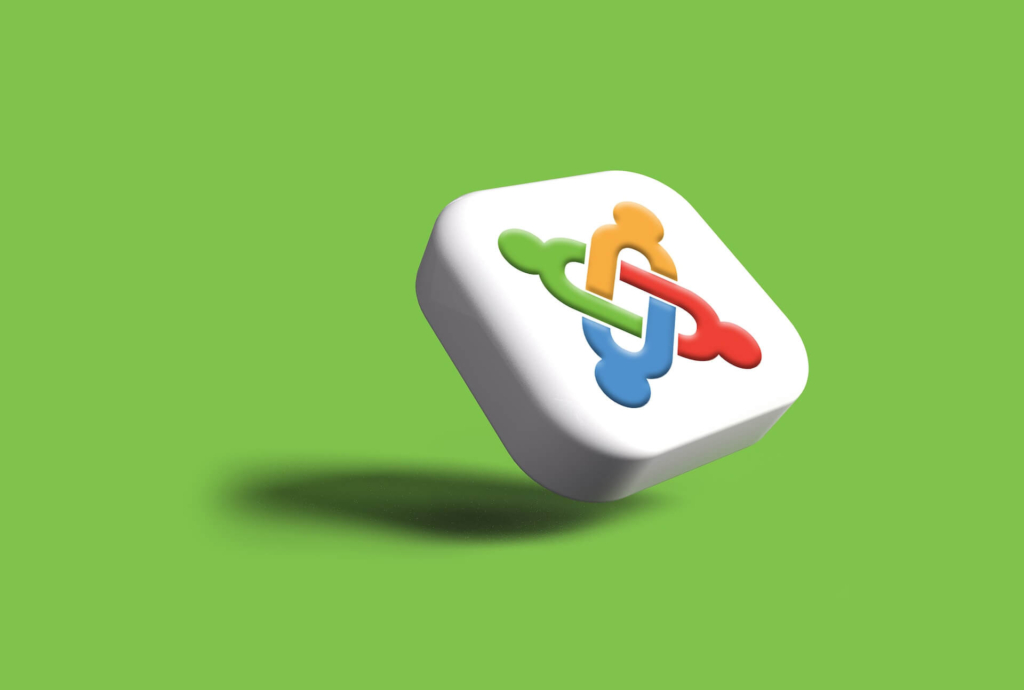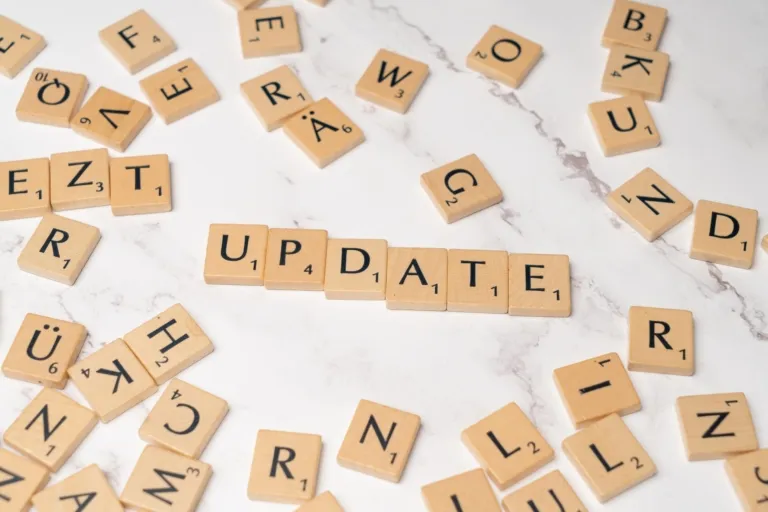Some time ago, we got acquainted with the core version of Joomla! 4 and took a closer look at what the new Joomla version has to offer. To refresh your memory on the main updates in Joomla! 4, you can read more about them in our blog. This time, however, we’ll take a closer look at what exciting new features can be expected from upcoming Joomla versions – with a focus on Joomla! 5 and an introduction to the changes ahead.
When can we expect Joomla! updates?
When talking about updates, it’s important to distinguish between three different types of versions: major, minor, and patch versions. Each of these carries a different level of significance and content in terms of updates. In the example below, the number 4 represents the major version, 2 the minor version, and 1 the patch version.

The most extensive updates are major version upgrades. Major version updates address critical issues that can cause significant malfunctions in the content management system or pose serious security risks. Joomla! follows an average two-year cycle for major version updates to ensure that each release is thoroughly tested and refined. Since the initial release of Joomla! 4 came out in 2021, Joomla! 5 is expected in the second half of 2023, and Joomla! 6 is planned for release in 2025.
Important dates
Testing of Joomla 5.0 “Alpha” has already begun. Here are some important dates to keep in mind for upcoming milestones (note that these dates are subject to change).
New functionalities are added and various changes are made.
- Alpha 1: May 30, 2023
- Alpha 2: June 27, 2023
- Alpha 3: July 25, 2023
The scope of new functionalities is limited, and if necessary, minor changes or enhancements are made to existing features.
- Beta 1: August, 2023
- Beta 2: August 22, 2023
- Beta 3: September 5, 2023
In the final version phase, no new functionalities are added or changed. The focus is on testing and bug fixes to make the final release more stable by the time of publication.
- Release Candidate: September 19, 2023
- Final Release: October 17, 2023
Minor version updates carry a medium level of impact and are used to enhance the functionality of the content management system or to fix identified security vulnerabilities. With minor versions, smaller-scale code changes are implemented to quickly apply necessary improvements, ensuring the website functions correctly and remains secure. In Joomla!’s case, minor versions are planned to follow roughly six-month cycles. This helps to keep the workload manageable for the Joomla! development team, while also allowing users to anticipate when updates are likely to be released. However, the release schedule for minor versions is not strictly fixed — depending on the bugs found, a more frequent update cycle may be required.
Patch version updates have the smallest impact. A patch version is used to “fix” smaller, newly discovered issues.
Although during the update process it might be tempting to go for the “just press the button and it’s done” approach, it’s not quite that simple. Experience has shown that, depending on the website, even smaller updates can break the site, and adjustments in the code may be necessary to ensure the updates are compatible with the existing solution. That’s where our maintenance service specialists can step in to help.
Looking for maintenance service?
Redwall offers high-quality and well-thought-out maintenance services.
👋 Send us an email at info@redwall.ee or call us at 776 9222.
Let’s arrange a meeting to get to know each other, brainstorm together, and discuss how we can help with our services.
What kind of updates can be expected in Joomla! 5?
Although the Joomla! 3 era officially ends on August 17 of this year and the Joomla! 4 period fully begins, Joomla! developers are already actively working on the launch of Joomla! 5. This is because Joomla! aims to remain modern and competitive in the fast-evolving world of web development. While major changes bring improved functionality, user experience, and security, there is also a risk that previously built solutions may no longer work with Joomla! 5’s core version — potentially requiring an entirely new website. Additionally, a completely redesigned content management system may present a steep learning curve for content managers who are used to earlier Joomla! versions.
Let’s focus on the positive, and highlight some of the most important content-related updates, along with their impact on Joomla! website administrators and developers.
Removal of deprecated code
One of the most significant content-related “additions” in Joomla 5 is the removal of deprecated code. While this might not mean much to the average user — and the update isn’t visually noticeable — it raises the question: what does this kind of update actually offer to users?
The removal of deprecated code is essentially an investment in the future — it simplifies website maintenance and testing. With the new code structure, Joomla! aims to support the quality and security of third-party developers’ code. By following Joomla! standards when building plugins, automated code testing will become possible in the future.
Raising the minimum PHP version to 8.1
When migrating to Joomla! 5, it’s important to ensure that your server is running at least PHP version 8.1. If the server is not yet using the newer version of PHP, this update should definitely be carried out. This change significantly boosts Joomla!’s performance (your website will be faster!) and provides greater flexibility for developers — allowing the use of modern tools and extensions for writing better code.
Multisite functionality
Although WordPress has had multisite functionality for quite some time, Joomla! has not yet provided the option to manage multiple websites from a single administration panel. Initially, this functionality was planned to be included in a Joomla! 4 core update, but it was postponed. Other features were prioritized during the Joomla! 4 update process, and there was no desire to rush its release. Now, there is hope that multisite functionality will be introduced with the Joomla! 5 version.
CSS core impacts on templates
In short, a template controls the overall style and appearance of a website by bringing together key elements, modules, and components, along with the ability to define styles. Many individual developers create custom-built solutions, which may be available either for free or for a fee, offering ready-made options with additional features for website design.
Before Joomla! 4, major version updates often broke custom solutions. The “WebAsset Manager” introduced in Joomla! 4 has helped minimize the occurrence of such issues. In the long term, Joomla!’s goal is to decouple the core layout from the “Cassiopeia” template. This will make it possible to create new Joomla! templates using other frameworks, such as Tailwind or UIKit. For template designers, this means Joomla! updates will be less disruptive to templates, and with each major version update, there will be less need to rewrite or heavily adjust custom templates.
Conclusion
The main goal of Joomla! 5 is to create new features and functionalities that, unfortunately, are not possible with the current codebase. Since it’s unlikely that all planned updates can be implemented within the current timeframe, the aim of Joomla! 5 is to lay the foundation for adding these new features in future (major) versions.
In summary, there’s quite a lot to look forward to in Joomla! 5’s major release. From the technical side, the removal of deprecated code is a highly anticipated improvement, along with the possibility of creating Joomla! templates using popular frameworks like Tailwind or UIKit. It will also be exciting to see what Joomla!’s new block-based content editor might look like — a concept that has made WordPress’s Gutenberg editor very popular.
Sources:
- Joomla! Development Strategy
- What to Expect from Joomla 5: A Timeline, Reasons for Development, and Potential Issues for Users
- Joomla! 5.0 Bold in one year – But can WE do it?
- Joomla! 5 – Panta Rhei (The follow up)
- Joomla 5 is coming, time for a new look for all our sites? Join the challenge and have a say.
- Joomla 5.0 Alpha 2 – New ideas added to Joomla 5!



